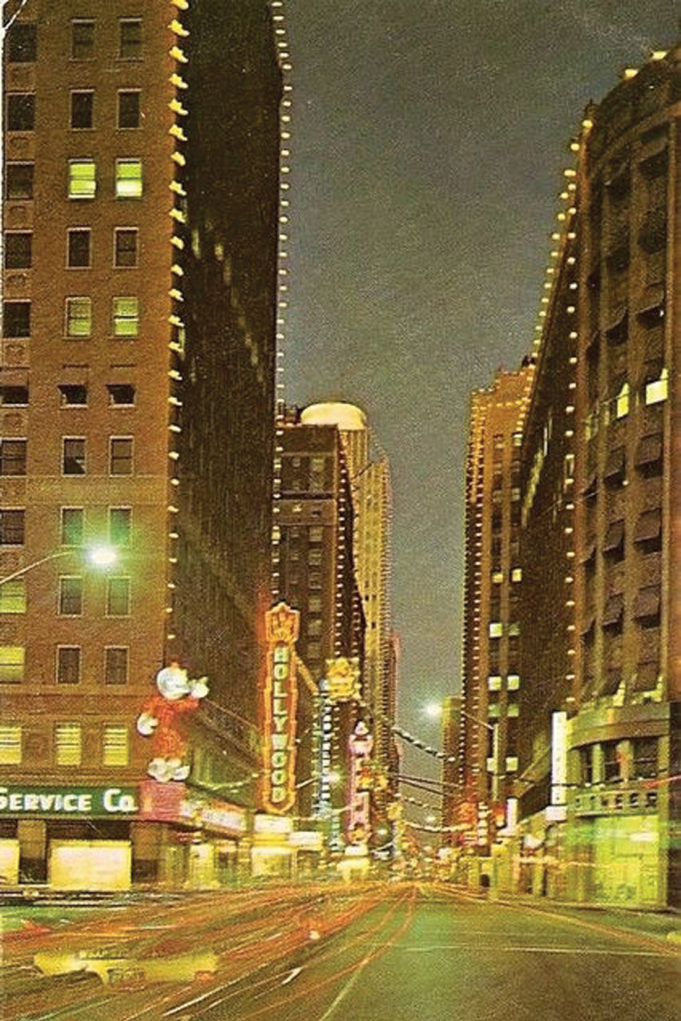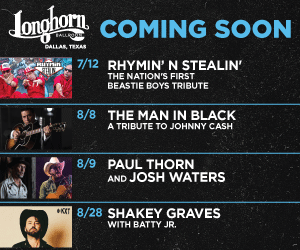Folks who moved to Fort Worth this millennium missed out on the city’s bright, sparkling golden era. Literally. The last half of the 20th century saw downtown property owners outlining their buildings with beautiful, amber-toned Christmas lights that shone year-round at night. All the bulbs matched and were spaced identically. Back then, I would tell anyone from any place that my hometown’s skyline would put theirs to shame. I’d never seen New York City, Paris, or most other fancy cities but knew that Cowtown’s skyline would make the others resemble back-road burnt-out carnivals by comparison.
As kids, my brothers and I would perk up and lean toward the car windows every time my parents drove anywhere near downtown at night. The gorgeous scene made my heart happy, the same feeling I’d get when touring Christmas lights in Arlington’s Interlochen neighborhood. Fort Worth’s skyline resembled Christmas all the time.
I recall how proud I felt after a former college girlfriend flew here from California in the 1980s to visit and couldn’t stop gushing over my hometown’s beautiful skyline. I might have packed on a few extra pounds, but my city looked hot, by god!
Many people around the country knew about our skyline from postcards, travel brochures, and magazines that depicted the brilliant spectacle.
“It was really impressive,” said Doug Harman, a longtime history buff who served as city manager in the 1980s and executive director at Fort Worth Convention & Visitors Bureau for many years. “The uniformity of lights kind of spoke not only to the size of downtown but also what seemed to be a real coordination among the building people downtown.”
Downtown merchants, even in their lofty skyscrapers, remained at heart friendly neighbors willing to link arms for the common good. We were a team – Team Fort Worth – with our skyline providing the exclamation point. Other big cities such as Dallas and Houston emblazoned their skylines with lights, but theirs seemed more haphazard and less organized.
Fort Worth’s lights captivated us in ways we didn’t even realize. Back in caveman days, the lack of artificial light on Earth meant the night skies were awash with bright, beautiful stars and a big yellow moon – providing light that diminished the chances of a saber-toothed tiger sneaking up on you in your sleep and eating your liver for a midnight snack. Light meant safety and comfort.
Also, an early method of finding water was looking for moonlight or starlight on a reflective surface. Again, light equated comfort and survival. We humans are moth-like in our attraction to light. A million years of evolution hasn’t killed that instinct, and Fort Worth was among the best of cities to feed that need for luminosity.
So what happened? Why did our skyline become so … not ugly or dark but, well, ordinary? Typical? Why doesn’t downtown pop like in the days of old?
After many weeks of research and investigation, I solved the mystery. (OK, I searched online for “downtown Fort Worth skyline lights” and in two seconds found a Bud Kennedy column from the Fort Worth Star-Telegram that provided the answers.) Kennedy described how the skyline lights were the brainchild of Hubert Foster, an insurance agent who worked in a high rise on Throckmorton Street and died last year at 91. Foster pitched his bright idea at a downtown business meeting in 1959. Foster followed his talk with action, installing lights around the edges of his office building. The Downtown Fort Worth Association pushed other building owners to do the same, and two-dozen buildings were soon illuminated in the same 25-watt amber bulbs, each spaced four feet apart. By the time President John F. Kennedy and the First Lady flew over Fort Worth on their fateful visit in 1963, more than 60 buildings were outlined with identical lights.
“Those lights are so pretty,” Jackie Kennedy probably said while looking out the airplane window.
“Not as pretty as Marilyn Monr … I mean, yes, they are, honey,” JFK probably responded.
Foster’s idea to create the most beautiful downtown skyline in the world was the second greatest idea of 1959. The first occurred in February of that year, when Bill and Rita Prince became frisky inside a little pier-and-beam frame house near Montgomery Street. Nine months later, I popped into the world. Maybe the illuminated skyline and I being conceived in the same year linked us for eternity in a divine manner that I can’t shake. Maybe that’s why I’m missing those downtown lights so much. (Or maybe I’m just high. No, I’m pretty sure it’s the divine bonding thingy.)
Today’s downtown offers plenty of lights, sure, but the overall impact has diminished. Modern LED (light-emitting diodes) systems replaced many of the old-school bulbs. A variety of colors replaced the uniformity. The spacing is more willy-nilly. The building owners “fell off in trying to keep that up, and the skyline synergy dissipated over time,” Harman said. “The lights today are dramatic and interesting, but they’re not the same as they used to be.”
Kennedy’s column cited other factors, including a major hailstorm in 1995 that broke many of the bulbs, followed by the infamous tornado in 2000 that hammered downtown. Modern LED systems can be programmed to shine purple during TCU football games but don’t have the same sparkle as the old-school incandescent bulbs.
Everything changes, I suppose. The skyline born in 1959 has died out, and all of us curmudgeons from that year will follow suit soon enough. Then, you won’t have to listen to people like me griping. By then, you will be looking out at our downtown’s crumbled architecture, which will have been destroyed by revolutions and climate change and be barely visible in the dark except for the small barrel fires being stoked by the few remaining Mad Max-like survivors, and you can say, “Man, I sure miss those old LED lights that changed colors back in the day and made downtown look so pretty.”












